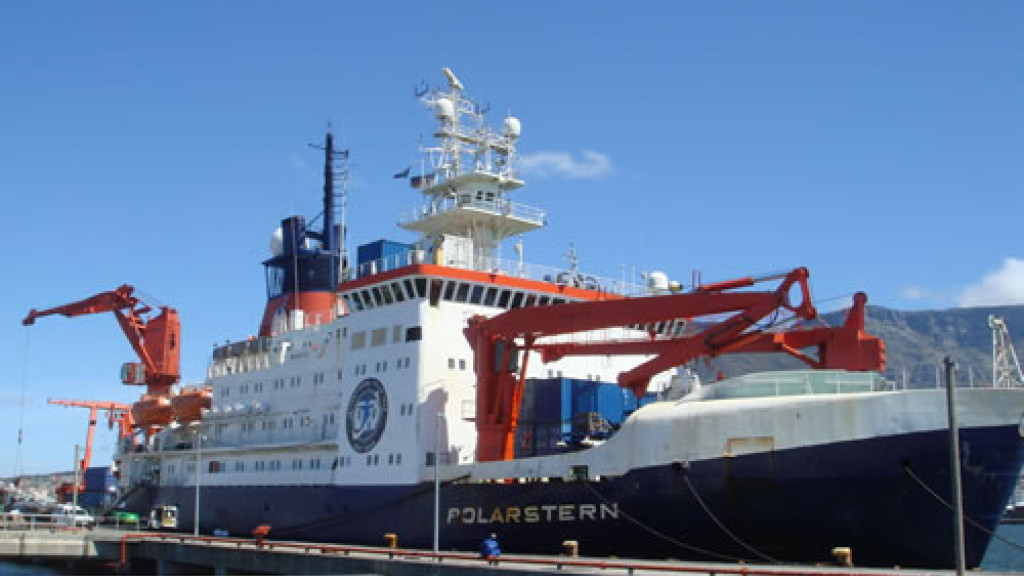Polarstern 2006 / CAML expedition: weekly report - departure from Cape Town
On the 23rd of November Polarstern departed with the ANT XXIII/8 expedition from Cape Town on schedule at 6 pm local time. Shortly after departure the new satellite communication device was tested successfully while the ship was slowly steaming close to the shore. In the beautiful sunshine and with the famous Table Mountain filling the background the scientists and crew members took the opportunity to introduce themselves to one another.
Not surprisingly almost everybody watched as a small group of humpback whales passed close to the ship. As if one of them wanted to say a fare well to Polarstern on her way south one whale suddenly leapt almost vertically out of the water only to let itself plunge back into the ocean. Most of us had only seen such a display on television. On day two of the cruise everybody started the usual unpacking of scientific equipment and to set up the laboratories.
All of us are working twice as hard not to be set back by bad weather conditions forecast for the next couple of days. The sooner this strenuous work is done the more relaxedly we can face what is going to come.
Despite the workload there were still a few free moments to glimpse the first albatrosses gliding effortlessly above the sea surface. Since leaving Cape Town the vessel has been heading south towards the German Neumayer Station which we have to supply with fuel and other consumables. From there, we will travel along the ice edge to reach the Antarctic Peninsula. Only after arrival at the Peninsula will the majority of scientists start their actual scientific programme.
There are two main activities for this cruise;
- The first is an investigation of natural resources focusing mainly on fish as part of the Convention of the Conservation of Antarctic Marine Living Resources (CCAMLR).
- The second is for the Census of Antarctic Marine Life (CAML) which will investigate marine life situated directly beneath the site of the recently collapsed Larsen Ice Shelves as a result of climatic warming.
Both will contribute to the International Polar Year 2007-2008, which will begin soon. The incentive of international cooperation will draw scientists from Germany, Belgium, Chile, Denmark, France, United Kingdom, Italy, Canada, Russia, Spain, Czech Republic, Ukraine, and USA to work together as a team. The percentage of female participants (38%) indicates that the tradition of equal opportunity within the field of marine ecology prevails.
All the scientists have settled in well although some have taken a little time to adapt to the ship'w movement in the ocean swell. On behalf of all the scientific participants, chief scientist Julian Gutt sends his regards and best wishes.

